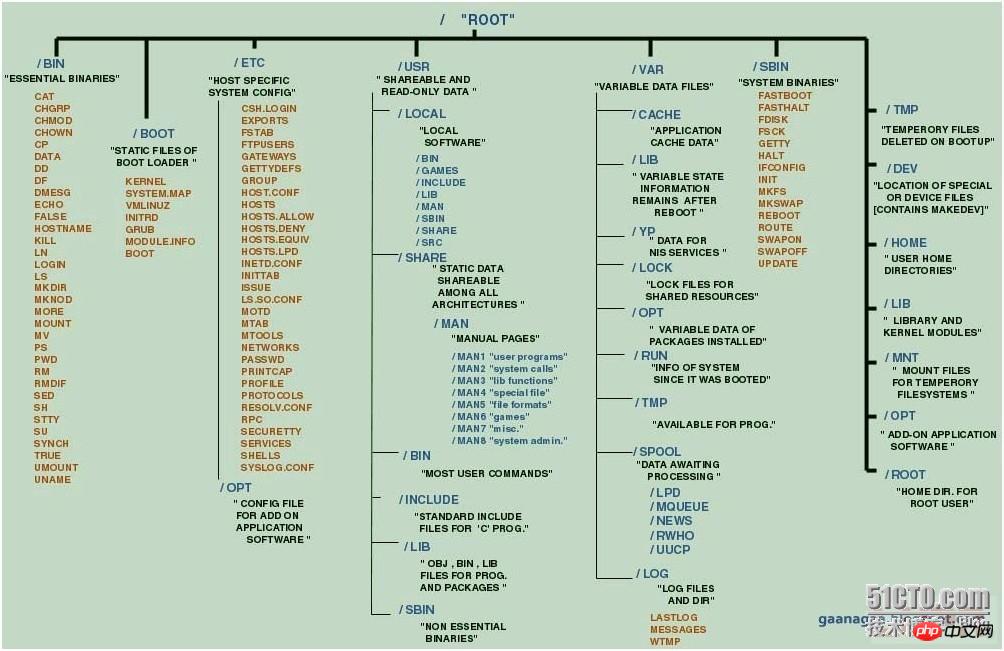make 如何工作的
對于不知道背后機理的人來說,make 命令像命令行參數一樣接收目標。這些目標通常存放在以 “makefile” 來命名的特殊文件中,同時文件也包含與目標相對應的操作。更多信息,閱讀關于 makefiles 如何工作的系列文章。
當 make 命令第一次執行時,它掃描 makefile 找到目標以及其依賴。如果這些依賴自身也是目標,繼續為這些依賴掃描 makefile 建立其依賴關系,然后編譯它們。一旦主依賴編譯之后,然后就編譯主目標(這是通過 make 命令傳入的)。
現在,假設你對某個源文件進行了修改,你再次執行 make 命令,它將只編譯與該源文件相關的目標文件,因此,編譯完最終的可執行文件節省了大量的時間。
make 命令實例
下面是本文所使用的測試環境:
os?——?ubunut?13.04 shell?——?bash?4.2.45 application?——?gnu?make?3.81
下面是工程的內容:
$?ls? anothertest.c?makefile?test.c?test.h
下面是 makefile 的內容:
all:?test? test:?test.o?anothertest.o? ??gcc?-wall?test.o?anothertest.o?-o?test test.o:?test.c? ??gcc?-c?-wall?test.c? anothertest.o:?anothertest.c? ??gcc?-c?-wall?anothertest.c? clean:? ??rm?-rf?*.o?test
現在我們來看 linux 下一些 make 命令應用的實例:
1. 一個簡單的例子
為了編譯整個工程,你可以簡單的使用 make 或者在 make 命令后帶上目標 all。
$?make? gcc?-c?-wall?test.c? gcc?-c?-wall?anothertest.c? gcc?-wall?test.o?anothertest.o?-o?test
你能看到 make 命令第一次創建的依賴以及實際的目標。
如果你再次查看目錄內容,里面多了一些 .o 文件和執行文件:
$?ls? anothertest.c?anothertest.o?makefile?test?test.c?test.h?test.o
現在,假設你對 test.c 文件做了一些修改,重新使用 make 編譯工程:
$?make? gcc?-c?-wall?test.c? gcc?-wall?test.o?anothertest.o?-o?test
你可以看到只有 test.o 重新編譯了,然而另一個 test.o 沒有重新編譯。
現在清理所有的目標文件和可執行文件 test,你可以使用目標 clean:
$?make?clean rm?-rf?*.o?test $?ls anothertest.c?makefile?test.c?test.h
你可以看到所有的 .o 文件和執行文件 test 都被刪除了。
2. 通過 -b 選項讓所有目標總是重新建立
到目前為止,你可能注意到 make 命令不會編譯那些自從上次編譯之后就沒有更改的文件,但是,如果你想覆蓋 make 這種默認的行為,你可以使用 -b 選項。
下面是個例子:
$?make make:?nothing?to?be?done?for?`all'. $?make?-b gcc?-c?-wall?test.c gcc?-c?-wall?anothertest.c gcc?-wall?test.o?anothertest.o?-o?test
你可以看到盡管 make 命令不會編譯任何文件,然而 make -b 會強制編譯所有的目標文件以及最終的執行文件。
3. 使用 -d 選項打印調試信息
如果你想知道 make 執行時實際做了什么,使用 -d 選項。
這是一個例子:
$?make?-d?|?more gnu?make?3.81 copyright?(c)?2006?free?software?foundation,?inc. this?is?free?software;?see?the?source?for?copying?conditions. there?is?no?warranty;?not?even?for?merchantability?or?fitness?for?a particular?purpose. this?program?built?for?x86_64-pc-linux-gnu reading?makefiles… reading?makefile?`makefile'… updating?makefiles…. considering?target?file?`makefile'. looking?for?an?implicit?rule?for?`makefile'. trying?pattern?rule?with?stem?`makefile'. trying?implicit?prerequisite?`makefile.o'. trying?pattern?rule?with?stem?`makefile'. trying?implicit?prerequisite?`makefile.c'. trying?pattern?rule?with?stem?`makefile'. trying?implicit?prerequisite?`makefile.cc'. trying?pattern?rule?with?stem?`makefile'. trying?implicit?prerequisite?`makefile.c'. trying?pattern?rule?with?stem?`makefile'. trying?implicit?prerequisite?`makefile.cpp'. trying?pattern?rule?with?stem?`makefile'. --more--
這是很長的輸出,你也看到我使用了 more 命令來一頁一頁顯示輸出。
4. 使用 -c 選項改變目錄
你可以為 make 命令提供不同的目錄路徑,在尋找 makefile 之前會切換目錄的。
這是一個目錄,假設你就在當前目錄下:
$?ls? file?file2?frnd?frnd1.cpp?log1.txt?log3.txt?log5.txt file1?file?name?with?spaces?frnd1?frnd.cpp?log2.txt?log4.txt
但是你想運行的 make 命令的 makefile 文件保存在 ../make-dir/ 目錄下,你可以這樣做:
$?make?-c?../make-dir/? make:?entering?directory?`/home/himanshu/practice/make-dir'? make:?nothing?to?be?done?for?`all'.? make:?leaving?directory?`/home/himanshu/practice/make-dir
你能看到 make 命令首先切到特定的目錄下,在那執行,然后再切換回來。
5. 通過 -f 選項將其它文件看作 makefile
如果你想將重命名 makefile 文件,比如取名為 my_makefile 或者其它的名字,我們想讓 make 將它也當成 makefile,可以使用 -f 選項。
make?-f?my_makefile
通過這種方法,make 命令會選擇掃描 my_makefile 來代替 makefile。



















